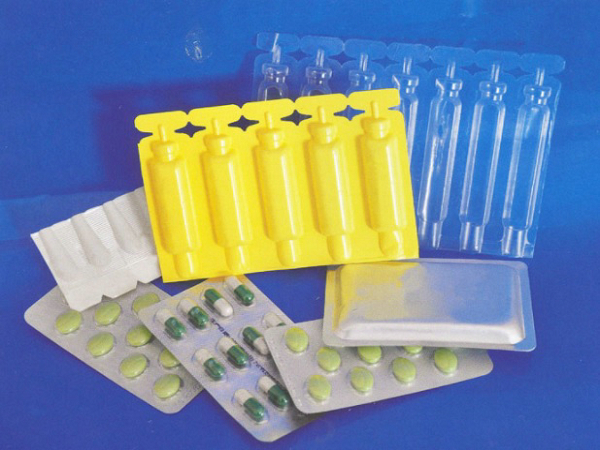Categories
- News From Haomei (307)
PVC/PE film is an ideal choice for suppository packaging due to its flexibility, moisture and oxygen barrier properties, light and water barrier properties, anti-static properties and vacuum evacuability. It also meets pharmaceutical packaging material standards, making it an ideal choice.
PVC/PE film for suppository packaging is typically made by laminating PVC (polyvinyl chloride) layers with PE (polyethylene) layers. These films are typically double or triple layered, with specifications ranging from 0.1-0.6mm in thickness and up to 16mm in width. They offer moisture and oxygen barrier properties, flexibility, and anti-static properties, meeting pharmaceutical packaging material standards.

PVC/PE Film Structure
– PVC Layer:
Material Characteristics: PVC (polyvinyl chloride) is a commonly used plastic material with excellent flexibility, processability, and barrier properties.
Function: In the composite film, the PVC layer primarily provides strength and acts as a barrier to oxygen and moisture, protecting the suppository from the external environment.
– PE Layer:
Material Characteristics: PE (polyethylene) is a thermoplastic resin with excellent flexibility, chemical resistance, and processability. Function: The PE layer in the composite film primarily enhances flexibility, improves heat-sealing properties, and reduces costs.
– Lamination Process:
The PVC and PE layers are combined through co-extrusion or other lamination processes to form a multi-layer composite film.
This composite structure combines the advantages of PVC and PE, improving the overall performance of the composite film.
Characteristics of PVC/PE Composite Film
– Excellent Flexibility:
PVC/PE composite film offers excellent flexibility, adapting to the packaging requirements of suppositories of varying shapes and resisting breakage.
– Moisture-Proof and Oxygen-Isolating:
This composite film effectively blocks moisture and oxygen, preventing suppositories from deteriorating due to moisture or oxidation, thereby extending the shelf life of medications.
– Light-Blocking and Water-Resistant:
PVC/PE film offers excellent light-blocking properties, protecting suppositories from sunlight. It also offers excellent water-repellent properties, preventing moisture penetration.
– Antistatic:
This composite film exhibits antistatic properties, reducing static adsorption during packaging and maintaining a clean packaging environment.
– Vacuumable:
PVC/PE laminate film supports vacuum packaging, further removing air from the package and preventing suppositories from oxidizing and deteriorating.

Advantages of PVC/PE Film in Suppository Packaging
– Compliant with Pharmaceutical Packaging Material Standards:
PVC/PE composite film fully meets the key requirements for pharmaceutical packaging materials, ensuring the safety and stability of suppositories during transportation and storage.
– Adaptable to Various Packaging Forms:
Suppositories are packaged in a variety of formats, typically using a double-layer packaging system. PVC/PE composite film can be flexibly applied to various packaging formats, such as blister packs and double aluminum packaging, to meet the production needs of different companies.
– Improved Production Efficiency:
PVC/PE composite film is easy to process and form, improving suppository packaging production efficiency and reducing production costs.
– Environmentally Friendly and Recyclable:
Some PVC/PE composite film materials are recyclable, meeting environmental requirements and reducing environmental impact.
Comparison with Other Packaging Materials
– Comparison with Aluminum Foil Packaging:
Advantages: PVC/PE film surpasses aluminum foil packaging in terms of flexibility, processing performance and cost.
Disadvantages: Aluminum foil packaging offers superior light-blocking, barrier properties, and aroma preservation, but is more expensive.
– Comparison with plastic blister packaging:
Advantages: PVC/PE film outperforms standard plastic blister packaging in terms of moisture resistance, oxygen barrier properties and antistatic properties.
Disadvantages: Plastic blister packaging may offer improved transparency and visual appeal, but its overall protective performance is inferior to that of PVC/PE film.
In practical applications, PVC/PE film can be used to manufacture packaging bags or films for pharmaceutical suppositories. These products have demonstrated excellent stability and safety in practical applications and have gained market acceptance.